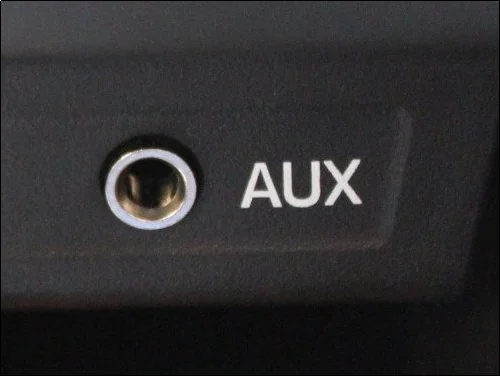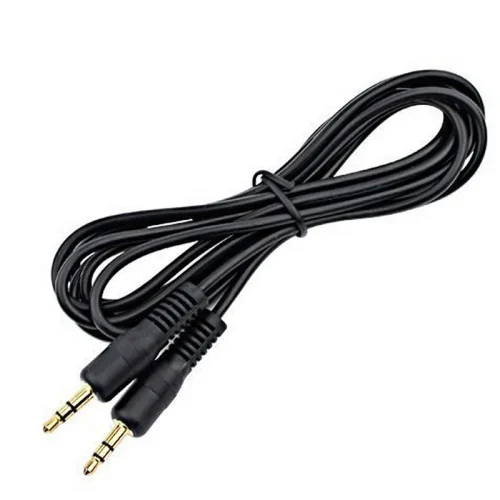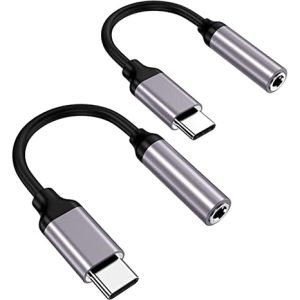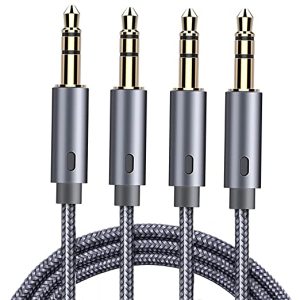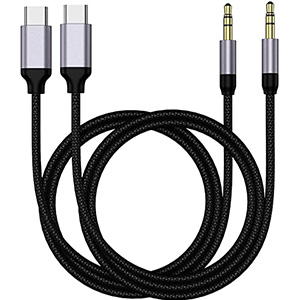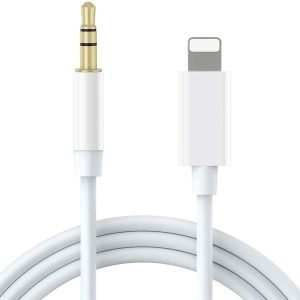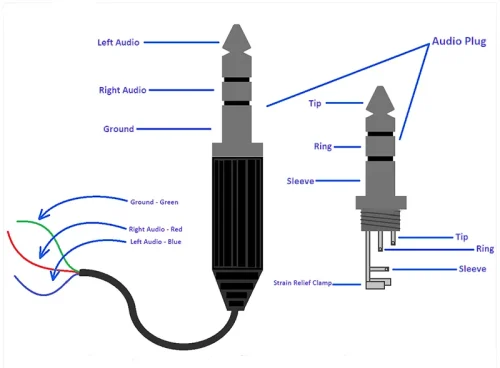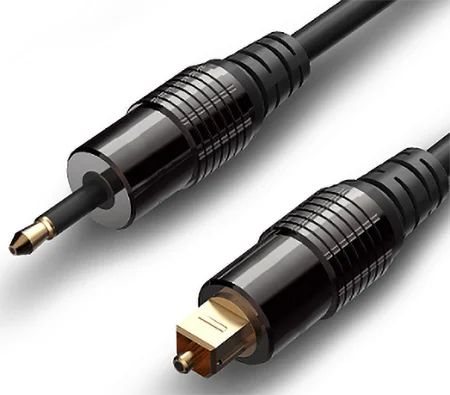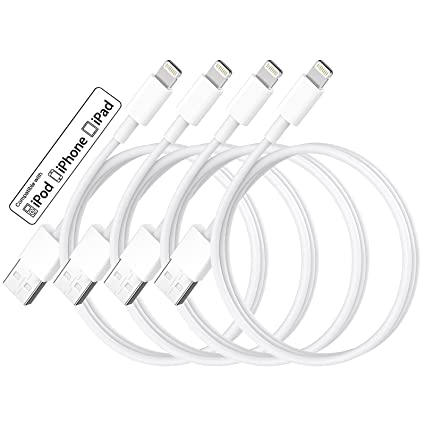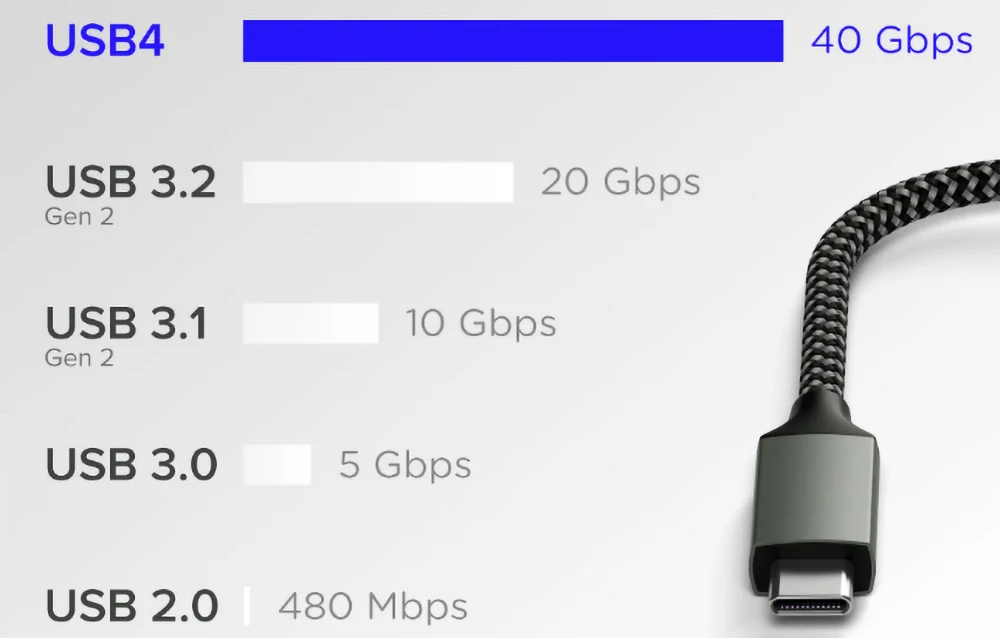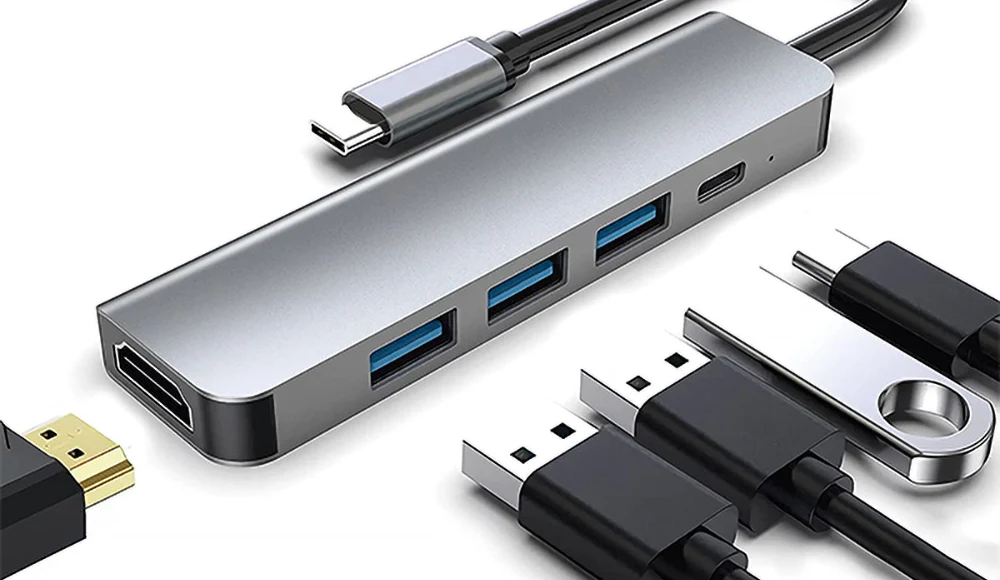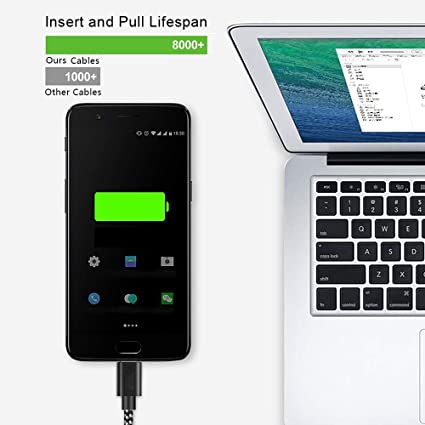Are Audio AUX Cable and audio cable the Same?
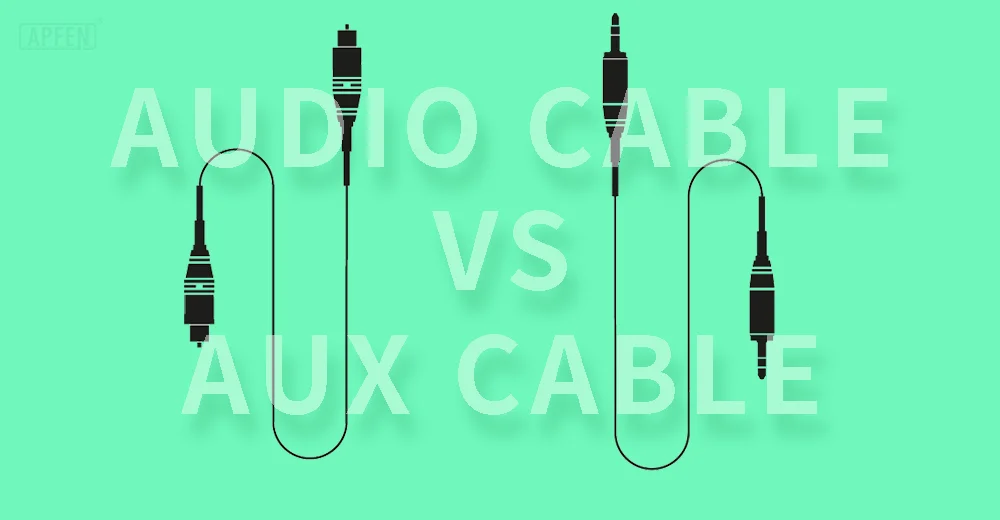
In this modern era, where technology plays a pivotal role in our daily lives, audio devices have become an indispensable part of our personal and professional routines. Whether we’re enjoying music, watching a movie, or conducting a meeting, audio quality and connectivity are of utmost importance.
The AUX port connectors that make up an audio AUX cable are important components that facilitate seamless audio transfer and enhance the user experience. But what exactly are they, and what purpose do they serve? In this article, we will delve into the world of audio AUX cables and ports, demystifying their functionalities and shedding light on their importance in our daily lives.
What is an AUX Port?
An auxiliary port (AUX) is a type of standard communications port on a device that accommodates audio signals for: MP3 players, Headphones and headsets, Microphones, Speakers. The auxiliary port, commonly referred to as an AUX port, is a versatile and widely-used input for audio devices, serving as a convenient method to connect external audio sources to a variety of electronic devices such as smartphones, tablets, and car stereos.
The AUX port is typically distinguished by a 3.5mm socket, offering a simple and reliable means of transmitting audio signals. With its widespread availability and ease of use, the AUX port has become an indispensable feature for consumers seeking to enjoy high-quality audio playback across different platforms. Its universal compatibility and straightforward functionality make the AUX port an essential component for modern audio connectivity, empowering users to seamlessly link their favorite devices and experience immersive sound quality in diverse settings.
Why are AUX Ports Commonly Found in Various Devices?
AUX ports have become ubiquitous in modern devices due to their versatility and user-friendly nature. Here are a few reasons why they are commonly found in various devices:
- Flexibility in Audio Sources: AUX ports enable users to connect a wide range of audio sources, including smartphones, MP3 players, portable gaming consoles, and even older devices without bluetooth aux connector capabilities. This versatility allows for easy integration and enhanced audio experiences.
- Universality: 3.5mm AUX ports have been widely adopted as an industry standard. This means that most audio devices are equipped with this type of port, fostering compatibility across different brands, models, and generations.
- Cost Effectiveness: AUX ports offer a cost-effective solution for audio connectivity. Unlike wireless alternatives like Bluetooth or Wi-Fi, which may require additional hardware or licensing fees, AUX ports are simple and inexpensive to include in device designs.
- Ease of Use: Connecting devices via an AUX port is straightforward and user-friendly. It’s a matter of plugging one end of the audio cable into the external device and the other end connected to the aux port on the host device. This simplicity contributes to the widespread usage and appeal of AUX ports.
What are the Benefits of AUX Ports?
AUX ports provide several benefits that enhance the audio experience for users. Here are a few advantages of utilizing AUX ports:
- Improved Audio Quality: AUX ports enable a direct analog audio signal transfer, resulting in better sound quality compared to wireless transmission methods. By bypassing the need for compression and decompression, AUX ports ensure a more accurate and faithful representation of the audio source.
- Reduced Latency: Unlike wireless audio connections, which can sometimes introduce noticeable delays or latency, AUX ports offer near-instantaneous audio playback. This is particularly advantageous when using audio applications that require real-time sound synchronization, such as gaming or live performances.
- Extended Battery Life: When connecting audio devices via AUX ports, the host device’s battery is not drained by the demands of wireless audio transmission. This allows users to enjoy their music, podcasts, or videos for longer periods without worrying about needing to recharge their devices frequently.
- Enhanced Compatibility: AUX ports provide compatibility with a wide range of devices, both old and new. Whether you’re using a vintage cassette player or the latest smartphone, an AUX port ensures seamless connectivity and audio playback.
What is Audio Aux Cable?
An aux cord connector or auxiliary cord is a cord that allows your phone, computer, tablet, mp3 player, or whatever device you have with a headphone jack to connect with another device with an auxiliary port such as your car stereo, headphones, television, or home stereo!
Audio aux cables work by transferring analog audio signals from one device to another. When you plug one end of the cable into your device’s audio output, such as a headphone jack, and the other end into an audio input, such as a speaker or stereo audio aux cable, the cable establishes a direct electrical connection.
Want to know about all the technical details of a 3.5mm Aux Connector audio cable, check our blog.
Once connected, the audio signal travels from the output device through the copper wires of the aux cable and into the input device. The input device then converts the analog signal back into sound, allowing you to enjoy your favorite music, podcasts, or other audio content.
But here’s a question you might have: In an age where wireless connectivity options like Bluetooth and Wi-Fi dominate, you might be wondering why audio AUX cables remain so popular. The answer lies in their reliability, compatibility, and ease of use.
- Reliability: One of the primary advantages of audio AUX cables is their reliability. Unlike wireless connections that can suffer from signal interference or dropouts, an audio AUX cable provides a stable and uninterrupted audio transmission. Whether you’re in a crowded area or have numerous electronic devices nearby, an audio AUX cable ensures a consistent sound experience.
- Compatibility: Another reason for the continued relevance of audio AUX cables is their compatibility. The 3.5mm audio jack, which is the standard connection port for audio AUX cables, is present on a wide range of devices, including smartphones, laptops, tablets, and music players. This universality makes AUX cables a reliable choice for connecting various devices and audio sources.
- Ease of Use: Audio AUX cables are incredibly easy to use. Simply plug one end of the cable into the AUX port of your device and the other end into the input source or receiver, and you’re good to go. There’s no need for complex pairing processes or troubleshooting connectivity issues. Just plug and play!
-
Audio & earphone
APPHONE USB Type C to 3.5mm Female Headphone Jack Adapter
Read moreRated 0 out of 5 -
Audio & earphone
APPHONE Male to Male 3.5mm audio cable AUX Cord Auxiliary Adapter
Read moreRated 0 out of 5 -
Audio & earphone
APPHONE Double Braided USB C to 3.5mm connector Aux audio Cable
Read moreRated 0 out of 5 -
Audio & earphone
APPHONE DC male AUX connector apple lightning to 3.5mm audio cable
Read moreRated 0 out of 5
How Does Aux Connection Work?
The socket is for a 3.5mm jack (plug) of the sort that used to be on a set of headphones before everything went wireless. Plug a phone, music player, or digital storage device into an aux-in socket and you can listen to your favorite tunes without faffing around trying to connect to the car’s Bluetooth. That is the most straightforward answer.
The working principle of an Aux connection is relatively simple. Most common type of aux connection is a 3.5mm audio jack, also known as a headphone jack. This aux connector has a small, cylindrical plug with a metal tip and two or three metal rings.
- Device Connection: To establish an aux connection, you need a compatible cable with the appropriate connectors for your devices. For a 3.5mm aux connection, you would use a cable with a 3.5mm plug on both ends.
- Connecting the Devices: Plug one end of the aux cable into the aux output of your audio source device (e.g., smartphone, MP3 player) or the aux input of your audio receiving device (e.g., speaker, aux connector for car stereo). Then, plug the other end of the cable into the corresponding aux input or output of the receiving or source device.
- Audio Transmission: Once the devices are connected, the audio signal from the source device is transmitted through the aux cable to the receiving device. The receiving device then amplifies the audio signal and plays it through its speakers or outputs it to headphones.
- Audio Control: The volume and playback controls for the audio are typically controlled on the source device. Adjusting the volume or playback on the source device will affect the audio output through the aux connection.
Aux connections are widely supported and compatible with a variety of devices, making them versatile for connecting different audio sources to various audio systems. However, it’s essential to ensure that both the source and receiving devices have aux input/output capabilities.
How to Connect Optical Audio Cable to Aux?
Connecting a digital audio cable to aux is a game-changer, allowing you to enjoy crystal-clear sound and immerse yourself in your favorite songs, movies, and games. Transforming digital playing music audio output into AUX can be done through a few straightforward methods. Here are common and user-friendly approaches you might find helpful while connecting aux to audio cable:
- Method 1: Optical to Analog Converter Adapter
The most straightforward option is to use an optical to analog audio converter adapter. These small devices have an optical digital audio input that accepts a standard Toslink optical cable. They also have a 3.5mm headphone jack output. To connect, simply insert the optical cable from the source device into the adapter’s optical port. Then plug the adapter into the aux/headphone jack input of the receiving device, such as a home stereo or computer. This allows the digital optical audio signal to be converted to analog left and right channel audio that can be played over standard headphone jack connections. - Method 2: Optical to RCA Converter
Another alternative is to use an adapter that has both an optical input as well as dual RCA left and right audio outputs. RCA cables can then run from the adapter’s output to the aux inputs. Make sure to use RCA cables with male to male connectors on both ends. This maintains the digital signal up to the adapter, where it gets converted internally to analog audio voltages that the RCA outputs carry into the aux jacks. Adapters following this format are very common and inexpensive. - Method 3: External Digital to Analog Converter
For higher-end applications, consider a separate digital-to-analog converter or DAC unit. These have an optical input along with analog line-level audio outputs like RCA. The DAC does all the internal conversion work and provides a cleaner analog signal than cheaper adapters. Hook the DAC up to powered speakers, stereo amplifier or other system for playback. Using a standalone DAC maintains the highest possible audio quality from the optical source all the way through to the auxiliary inputs.
These are some of the main options for bridging optical digital audio and analog aux inputs. An adapter is convenient while a DAC provides the best quality solution. Consider your specific devices and audio needs to choose the right usb to aux connector connection method.
What is the Difference Between an AUX and an Audio cable?
Colloquially, an aux or Auxiliary cable is a TYPE of audio cable. USUALLY it is talking about a 3.5″ to 3.5″, 3.5″ to 1/4″, or SOMETIMES 1/4 to 1/4 cable. They are all TRS type cables. However, not all audio cables are aux cables, such as XLR, mini-XLR, banana plugs or RCA. Let’s learn more about the differences between the two types of cables.
AUX stands for “auxiliary,” signifying an unidentified or diverse audio source. AUX or auxiliary cables, also known as auxiliary cords, serve as connectors between audio devices like smartphones, laptops, and MP3 players to external output devices such as speakers or car audio systems. Identified by its 3.5mm jack on both ends, it links the audio output port of the device to the audio input port of the output device.
This cable boasts versatility, compatible with a broad range of devices, making it an ideal choice for connecting various audio equipment. Supporting stereo sound transmission, it ensures high-quality audio, delivering separate left and right channels. Its plug-and-play nature simplifies its usage, providing a hassle-free experience. Here are some key features of AUX cable:
- Transmit analog signals, compatible with numerous devices.
- Convert audio from digital to analog, potentially resulting in information loss or noise.
- May wear out faster compared to usb aux connector cables.
- Generally offer slightly inferior sound quality but are widely compatible.
Contrastingly, an audio cable serves as a general term encompassing diverse cable types for transmitting audio signals, unlike the specific 3.5mm aux cable. Audio cables vary in forms and connectors, tailored to connect specific audio equipment. They accommodate analog or digital signals, offering flexibility to link various audio sources and outputs, optimizing audio quality and fidelity based on specific audio setups.Here are some key features of Audio cable;
- Transfer digital information in digital systems.
- Superior sound quality due to digital-to-digital transmission.
- Can control playback in some cases.
- Less universal on older devices.
The specific difference between AUX cable and audio cable
The main point of distinction between an AUX cable and an audio cable lies in their usage and compatibility. While AUX cables are predominantly used to connect consumer electronic devices, audio cables have a wider scope and are used in professional audio setups.
- Usage and Compatibility:
AUX cables are primarily designed for connecting portable devices to external speakers or audio systems. They commonly feature a 3.5mm audio jack on both ends, making them compatible with devices that have a standard headphone output, such as smartphones and laptops.
On the other hand, audio cables come in various types and aux in connector, depending on the specific audio equipment they are intended to connect. For instance, RCA cables are often used to connect audio sources to amplifiers or home theater systems, while XLR cables are commonly used for professional microphones or studio gear. - Signal Quality and Shielding:
In terms of signal quality, both AUX cables and audio cables are capable of transmitting audio signals with high fidelity. However, audio cables, especially those used in professional setups, are often built with higher-grade components, resulting in improved signal integrity and reduced interference.
Additionally, audio cables used in professional audio applications, such as XLR cables, are often shielded to minimize electromagnetic interference. This shielding helps preserve the integrity of the audio signal, especially over long cable runs. - Length and Durability:
When it comes to length, AUX cables are generally shorter in length compared to audio cables. This is because they are commonly used for connecting portable devices to nearby audio systems. Audio cables, on the other hand, can be much longer, catering to the needs of professional audio setups that require longer cable runs.
In terms of durability, audio cables used in professional setups are often built to withstand the rigors of frequent use and transportation. They are made with robust materials and reinforced connectors, ensuring longevity even in demanding situations. AUX cables, being more consumer-oriented, may not possess the same level of durability as their professional counterparts.
How to Record Audio Using Aux Cable?
Recording audio using an aux cable is a simple and convenient method that allows you to capture high-quality sound. But how to do this? The short answer is: You will need an aux cable with a 3.5mm jack on both ends. You can use the ones used to connect woofers/players to speakers. Connect the audio device to the mic input of your computer. You also need to install audacity(or any audio processing software), and record the song, saving it as.
You can start the process of recording by plugging one end of the aux cable into the headphone jack of the device you want to record audio from. This could be your smartphone, tablet, or any other device that has a headphone jack. Then, insert the other end of the aux cable into the microphone or line-in port of the recording device. This could be a computer, audio interface, or a dedicated audio recorder.
Once the cable is connected, make sure that the recording device is set to receive audio from the aux input. This can usually be done by adjusting the input settings in the recording software or device settings. You may need to select the appropriate input source or adjust the input volume levels.
Now, you are ready to start recording. Simply play the audio you want to record on the device connected to the aux cable, and the recording device will capture the sound through the cable. Monitor the recording levels to ensure that the audio is not clipping or distorting. Once you are satisfied with the recording, stop the recording and save the audio file in the desired format.
An alternative method involves connecting your computer’s audio output to the microphone input, enabling you to capture live streaming songs. In the past, this was a go-to method before smartphones tablets were widely used. Nowadays, there are various recording apps available on app stores that simplify this process; you just need to locate and install the suitable one for your needs.
Recording audio using an aux cable is a versatile method that allows you to capture audio from various devices. Whether you want to record music, podcasts, interviews, or any other type of audio, using an aux cable provides a reliable and straightforward solution.
Are pcie and aux connectors the same?
PCIe (Peripheral Component Interconnect Express) connectors are used for expansion cards in computers, while AUX connectors are for analog audio signals in devices like headphones and speakers. They serve distinct purposes and are not the same.
Will an aux cable carry both audio and mic signal?
No, a standard AUX audio cable, also known as a 3.5mm audio cable, is designed to carry only audio signals. It does not have the capability to transmit a microphone signal. If you need to transmit both audio and microphone signals using a single cable, you would require a specific cable that supports that functionality. One common example is a TRRS (Tip, Ring, Ring, Sleeve) cable, which has an additional ring on the connector to carry the microphone signal. TRRS cables are commonly used with devices such as smartphones, where the same serial port is used for audio output and microphone input.
Can I combine aux cable and rca audio cable?
Yes, it is possible to combine an AUX cable and an RCA audio cable using an adapter or a converter. If you have a device with an AUX output (usually a 3.5mm headphone jack) and another device with RCA inputs (usually red and white connectors), you can use a standard 3.5mm to RCA adapter or cable. This adapter typically has a male 3.5mm connector on one end and female RCA connectors on the other end. You can connect the AUX cable to the 3.5mm end of the adapter and then connect the RCA cables to the RCA inputs on the other device. Alternatively, you can use a dedicated lightning to rca cable audio aux adapter or AUX to RCA converter. This type of device typically has a 3.5mm input and RCA outputs, allowing you to connect your AUX cable to the input and then use RCA cables to connect to the RCA inputs on the receiving device.
How many audio aux cables can you daisy chain?
There is no strict limit to the number of audio AUX cables that can be daisy-chained together. However, it’s important to consider the potential degradation of audio quality and signal strength as you increase the length and number of cables in the chain. Each additional cable introduces some resistance and potential interference, which can result in a loss of audio quality or a weaker signal. As you daisy chain more cables, these effects can accumulate, leading to a noticeable degradation in audio performance.
How to play audio on a laptop through aux cable?
With your laptop turned on, plug the audio connector cable (the USB or standard 3.5mm (1/8″) connector) into its corresponding port on the laptop. If you’re using a 3.5mm (1/8″) connector, look on the sides of your laptop for a small jack that has a drawing of headphones or a speaker.
Can an aux cable record audio?
You will need an aux cable with a 3.5mm jack on both ends. You can use the ones used to connect woofers/players to speakers. Connect the audio device to the mic input of your computer. You also need to install audacity(or any audio processing software), and record the song, saving it as.
How to fix the aux port in the car?
- Check to make sure the input device, like your phone, is working properly.
- Try using a different aux cable.
- Use a can of compressed air to clean out the aux port.
- Use a cotton swab and rubbing alcohol to clean out the aux port.
- If none of the above work, you should visit a mechanic or audio shop to have the problem fixed.
How to clean the aux port?
There are three primary methods of cleaning a headphone or auxiliary jacks properly and safely: wiping inside with a swab and alcohol, spraying the inside of the jack with compressed air. or (if you do not have alcohol or compressed air) carefully brushing with a very fine brush.
Is 3.5 mm audio cable AUX?
3.5mm TRS minijacks are found at the ends of the standard auxiliary (“aux”) cable to connect your phone directly to a portable speaker or car stereo system.
Is AUX or USB better sound?
USB cords are generally more convenient and deliver better sound, but are only available on digital systems. Aux cords are useful in situations where there is no USB or digital interface, like an old car, record player, or home theater receiver.
Is AUX the same as Jack?
The standard aux connector size is 3.5mm, while headphone jack sizes vary from 2.5mm to 6.35. You can use a headphone jack for an aux-in, but not the other way around. Auxiliary cables are essentially used for mixing consoles.
What are the 3 wires in AUX?
If we were to dissect the Aux Cable, there would be three wires – a ground cable (usually black or a shielded wire), a right signal cable (usually red) and a left signal cable (usually white or yellow).
What are the different types of audio AUX cables?
These three types are TS, TRS, and TRRS. TS connections are used for mono audio or independent microphones and have one ring around the metal end of the connector. TRS connections are used for stereo audio and have two rings. TRRS connections are used for stereo plus a microphone and have three rings.
Audio AUX cables, and AUX ports play a crucial role in connecting various audio devices and enabling audio transmission. They provide a standardized and widely compatible solution for connecting devices such as smartphones, tablets, laptops, car stereos, and audio systems.
At APPHONE, we take pride in being an industry-leading manufacturer of electronic cables, specializing in headphone adapters and cables. Our commitment to innovation and customized manufacturing capabilities sets us apart. We prioritize product quality and reliability, and high class customer service. ensuring that our cables meet industry certifications such as Apple MFI, CE, FCC, RoHS, and Reach.
We offer a comprehensive range of audio cable solutions, including headphone adapters, audio auxiliary cables, USB Type-C earpods, iPhone aux connector, and Lightning earphones. Whether you require customized cable length, material, or appearance design, we can tailor our products to your specific requirements. Our goal is to provide you with excellent product performance and meet the diverse needs of different application scenarios.
Share This Artcle:

Fast delivery
Fastest delivery within 22 days

Quick proofing
Fastest 3-day proofing cycle

After-sale protection
24-month long warranty

1V1Customer Service
Professional customer service follow-up

